Unable to Upload Wordpress Website to Siteground File Manager
Errors on your WordPress site can ho-hum down your work and create serious inconveniences for both yous and your users. For case, the "Installation failed: could non create directory" message can forestall you from providing a primal feature or functionality.
Luckily, resolving this error is fairly simple. By tweaking only a few settings, you can hands get your WordPress plugin or WordPress theme up and running in no time.
In this postal service, we'll discuss what causes this error and other issues related to it. Then we'll walk you through 3 methods for resolving the "Installation failed: could not create directory" message so that you can consummate your installation or update.
Allow's go started!
What Causes the "Installation Failed: Could Not Create Directory." Error in WordPress
At that place are three primary situations in which you might encounter the "Installation Failed: Could Non Create Directory." error in WordPress:
- When installing a theme or plugin via your WordPress dashboard
- During a standard theme or plugin update
- While attempting to upload files to the wp-content directory on your server
The root cause of the problem is the same in each scenario. Nevertheless, let's take a look at each of these situations in turn.
Installing a New Theme or Plugin on Your Site
Your WordPress site is made up of ii components: a database and various files that are stored on a server in 'directories.' When y'all apply WordPress admin to add together a theme or plugin to your site, it has to create a new directory in which to save its files.
However, if the plugin or theme you're attempting to install does non take permission to write in your website's root directory, it won't be able to complete this job. That'due south when you'll see an error such equally "Installation failed: could not create directory."
This error is your server'southward way of saying that yous're not immune to brand changes to your site's files by adding the plugin or theme in question. In general, this is a problem that usually occurs on new WordPress sites.
It's important to annotation that in that location is a similar, less common cause for this error. If your server is running out of disk space to shop your site's files, it may show this same message because it has no room for the new plugin or theme. Read this guide to check disk usage in WordPress.
This may be due to old backup files not being deleted, or it may happen because your hosting programme is too small for your site. In the latter case, y'all'll want to wait into upgrading to another hosting packet that provides more storage.
Updating an Existing Theme or Plugin
Sometimes, when attempting to upgrade a WordPress theme or plugin that's already installed on your site, you may see an mistake very like to the ane nosotros've described above. This i will typically read, "Update failed: could non create directory."
This problem occurs for the same reasons as the "Installation failed could non create directory." error. When y'all update a WordPress plugin or theme, WordPress needs to rewrite its files on your website's server. If your permissions settings are incorrect or in that location is not enough free space, the process will not be able to admission the right files or upload new ones.
Since the crusade of these two bug is the same, the solutions are identical as well. Any methods for resolving the "Installation failed: could not create directory" mistake listed below should also work for a stalled update.
Uploading Files to the wp-content Directory
Server file permissions are a security feature that hosting providers put to forbid unauthorized parties from making changes to your site or stealing sensitive data.
Withal, they tin sometimes lock you out of your ain files if they aren't set correctly.
This is why, if you endeavour to get around the "Installation failed: could not create directory." error in your WordPress dashboard past uploading the plugin's or theme's files direct to the wp-content directory on your server, you'll probable still encounter the same problem. The mistake occurs considering of a problem with your server, not your WordPress installation.
This issue may also extend to your wp-content/uploads subdirectory, where all your media files are stored. Adding images, videos, or similar content to your site by saving them to your server follows the same process as installing a new plugin or theme.
If you don't accept permission to write in your root directory, uploading content to wp-content/uploads volition still produce the error nosotros've been discussing. To ready it, y'all'll need to adjust your server's settings, equally we'll draw shortly.
Diagnosing the "Installation Failed: Could Not Create Directory." Error in WordPress (two Methods)
The skillful news near this fault is that it'south relatively easy to fix. Most of the time, correcting your permissions will clear everything right upward. Nevertheless, before y'all start piece of work on that solution, you may desire to make sure that information technology tin can solve your problem.
Beneath, we've outlined two methods for determining whether your site is experiencing a permissions-related mistake.
1. Employ the WordPress Site Health Tool
WordPress five.two introduced the Site Wellness tool. It contains a wealth of valuable information regarding your WordPress site, such as functioning test results, security checks, and WordPress configuration data.
You lot can access it past navigating to Tools > Site Wellness in your WordPress dashboard. To cheque your file permissions settings, yous'll want to click on the Info tab:
Subscribe Now
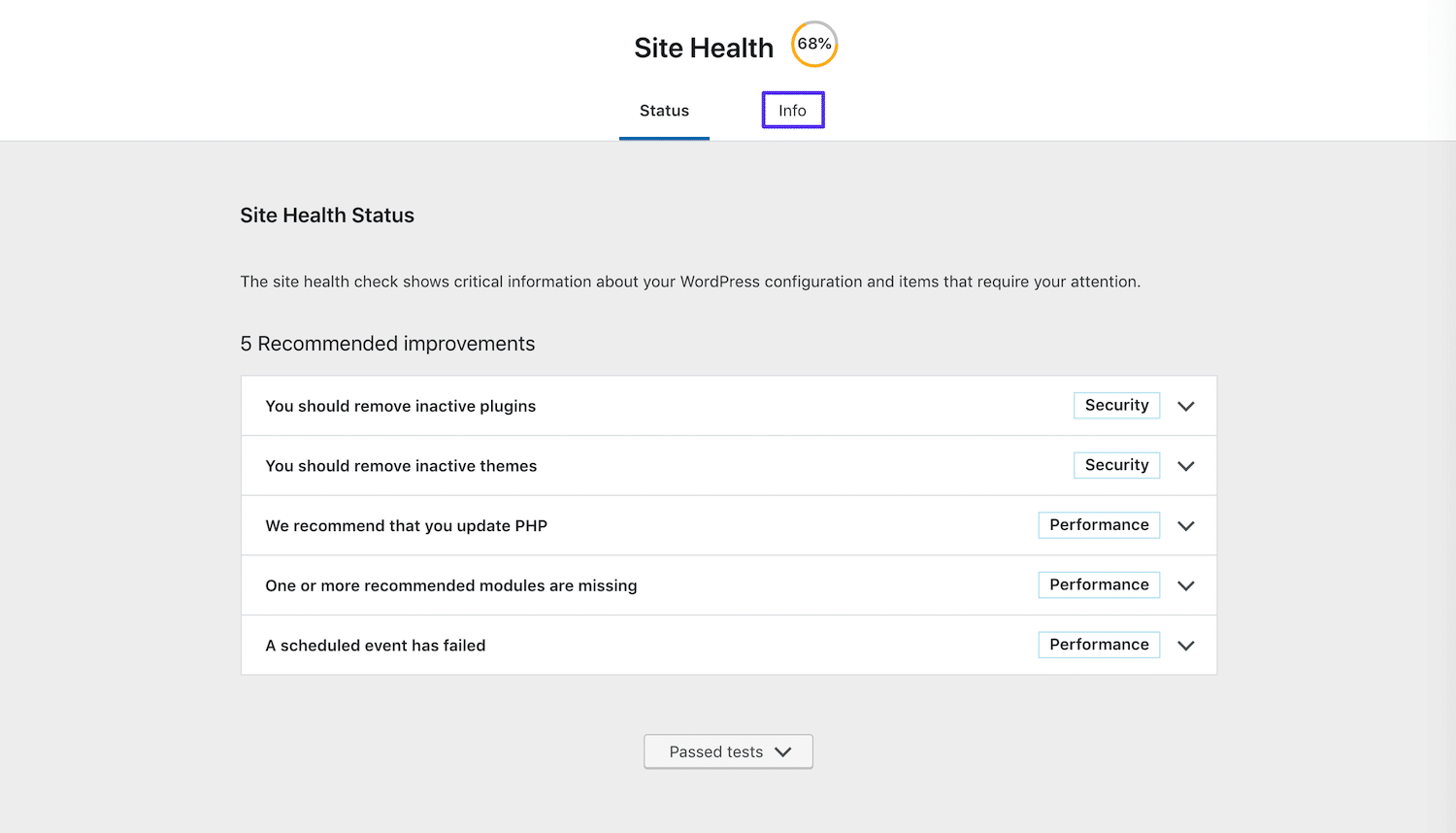
Then, scroll down to the last section, which should be labeled Filesystem Permissions:
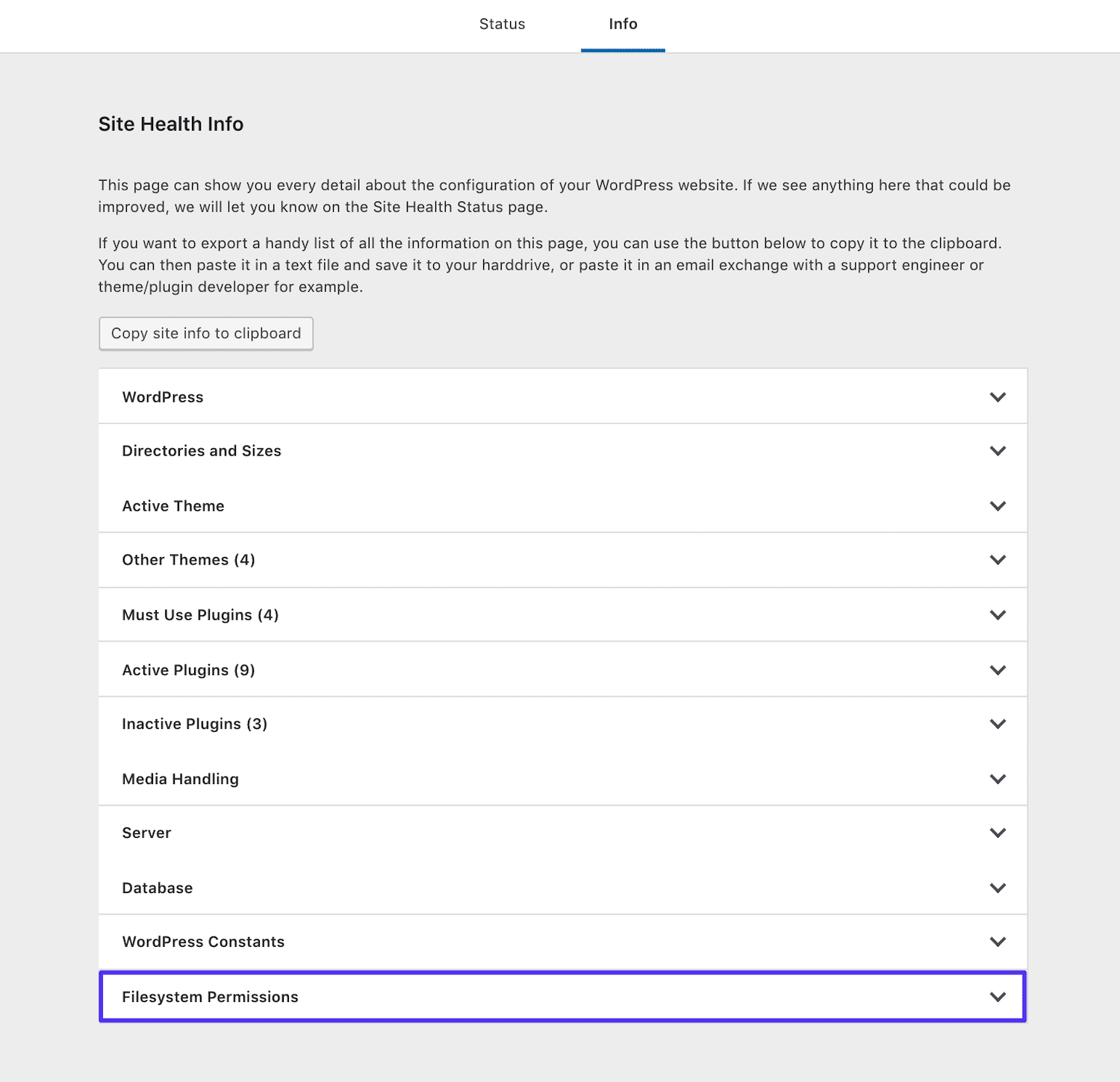
Here you'll see a list of crucial WordPress files, including the plugin and theme directories. Ideally, they will all be listed every bit "Writable":

If your permissions are not configured correctly, you'll see "Non writable" listed next to the problematic folders. If this is the case, you'll know that y'all need to correct your file permissions.
2. Check Your Server'southward Mistake Log
Another option is to bank check your server'due south error log. This may be a more efficient method, as it will brandish whatever errors that have occurred, not just incorrect file permissions. You should be able to access your logs via your hosting business relationship.
If you're a Kinsta customer, you tin can log into your MyKinsta dashboard and click on Sites in the sidebar:
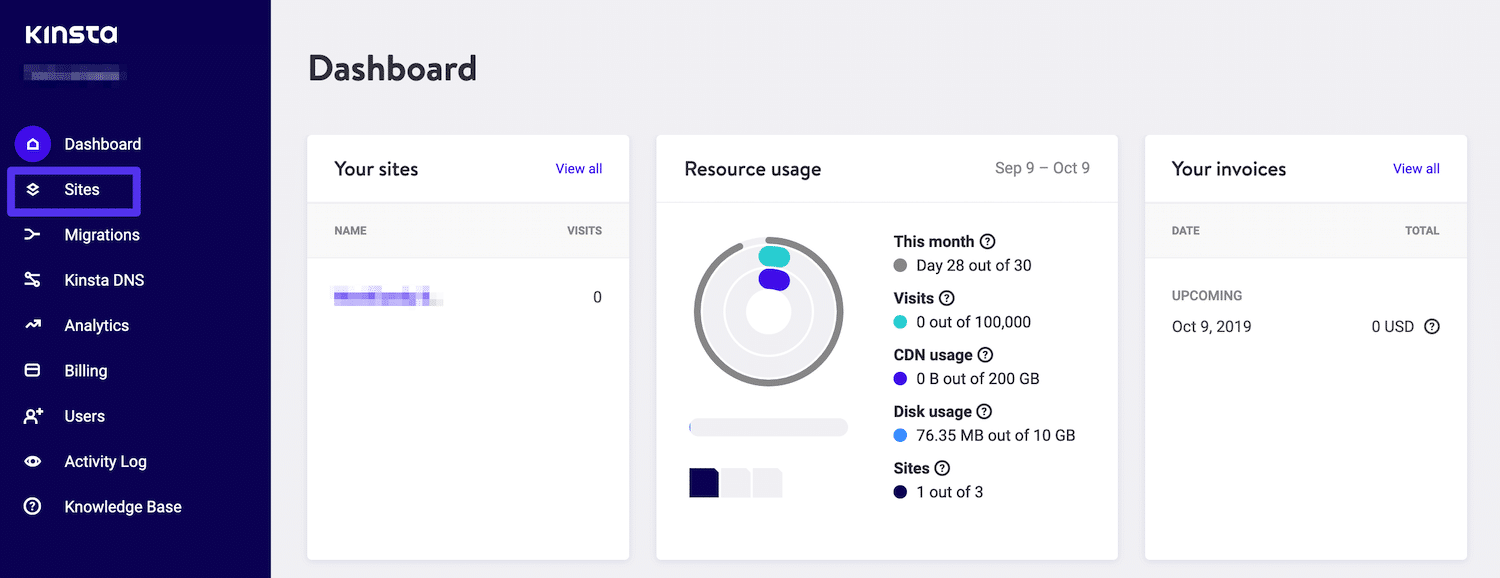
Select the site's name that is experiencing the "Installation failed: could not create directory" error. Then, choose the Logs tab:
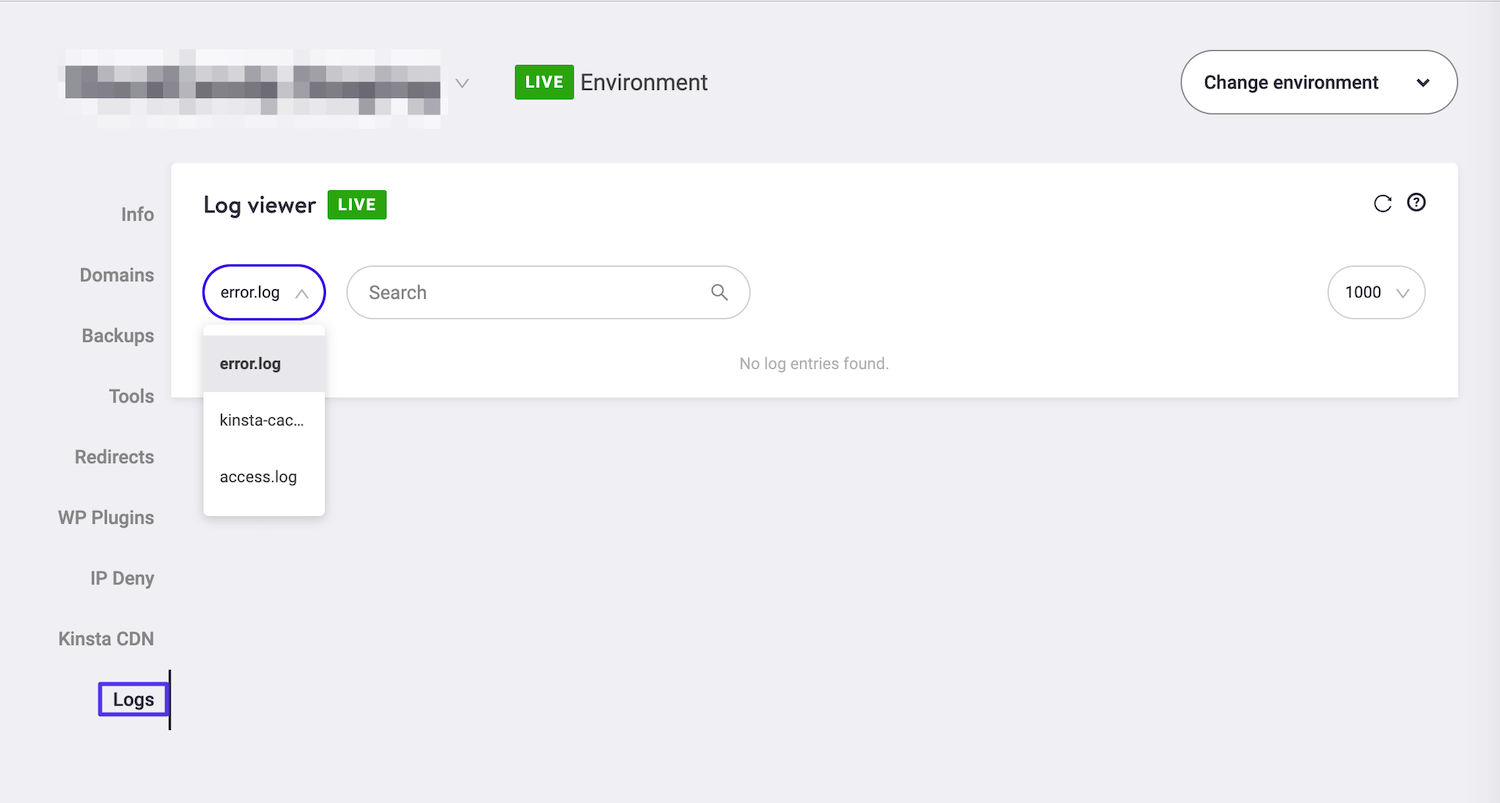
From the drop-down menu, make sure that error.log is selected. Hither, you should be able to see whatever recent errors that have occurred on your server, including incorrect file permissions or insufficient storage, either of which may be causing the installation fault.
If you see a relevant fault listed, you can either correct your file permissions or consider upgrading your hosting plan as needed.
How to Fix the "Installation Failed: Could Not Create Directory." Error in WordPress
If your site's permissions settings are causing the "Installation failed: could non create directory error," you can resolve it by resetting them. To exercise so, yous'll need to connect to your server via File Transfer Protocol (FTP), using an FTP client.
Whatsoever fourth dimension you make changes to your site's files, it's wise to create a backup commencement, just in case something goes wrong and y'all need to restore your site. Then, collect your FTP credentials from your hosting account.
Every bit a Kinsta customer, you can do this by accessing the Info tab for your site in the MyKinsta dashboard:
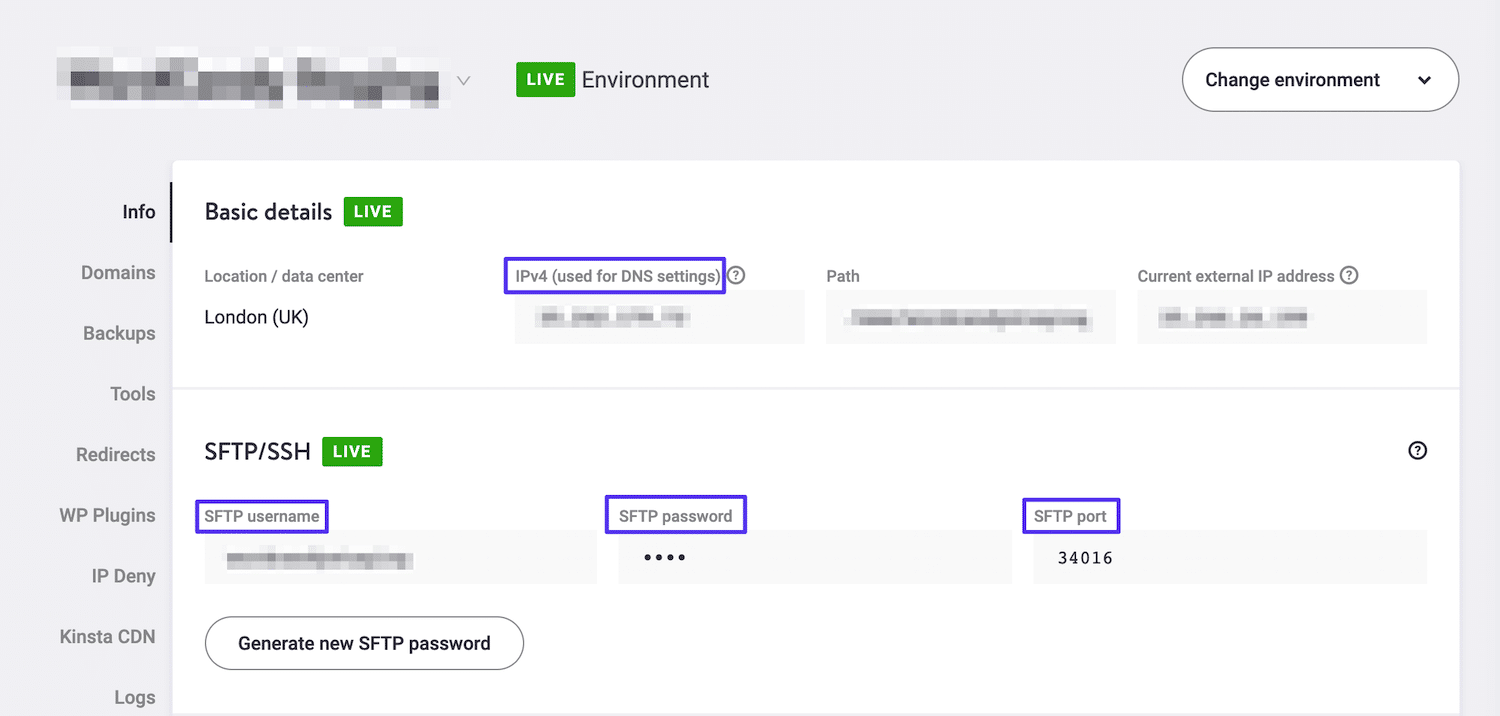
And then, open up upwards FileZilla (or some other client) and enter your information. You'll exist connected to your server, where you should see a folder called public_html. Double-click on information technology to view your WordPress files:
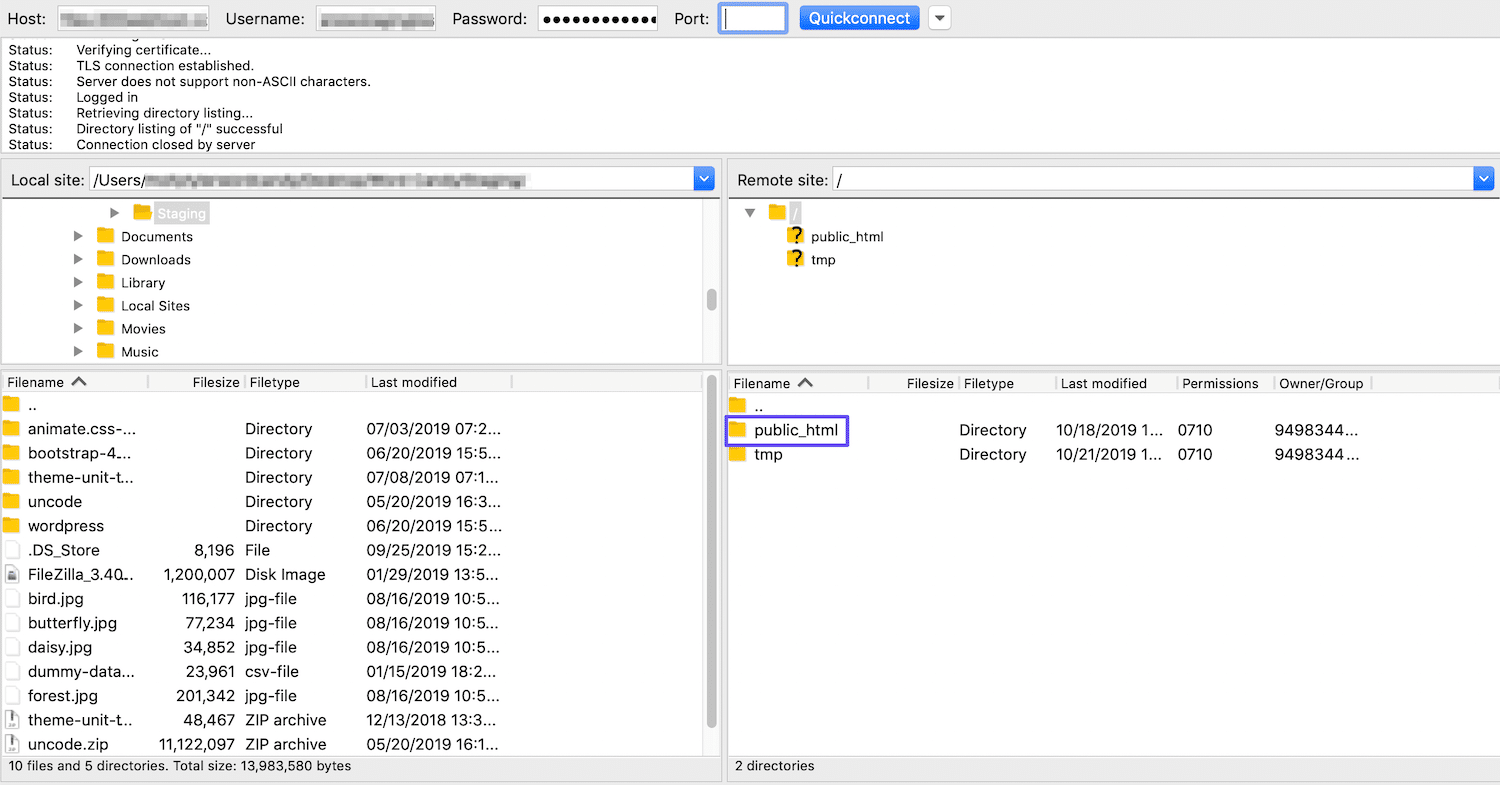
If you don't run across all the files, hither is a guide on how to show hidden files in Filezilla. After that, select the folders labeled wp_content, wp_includes, and wp_admin. Correct-click on them and choose File Permissions:
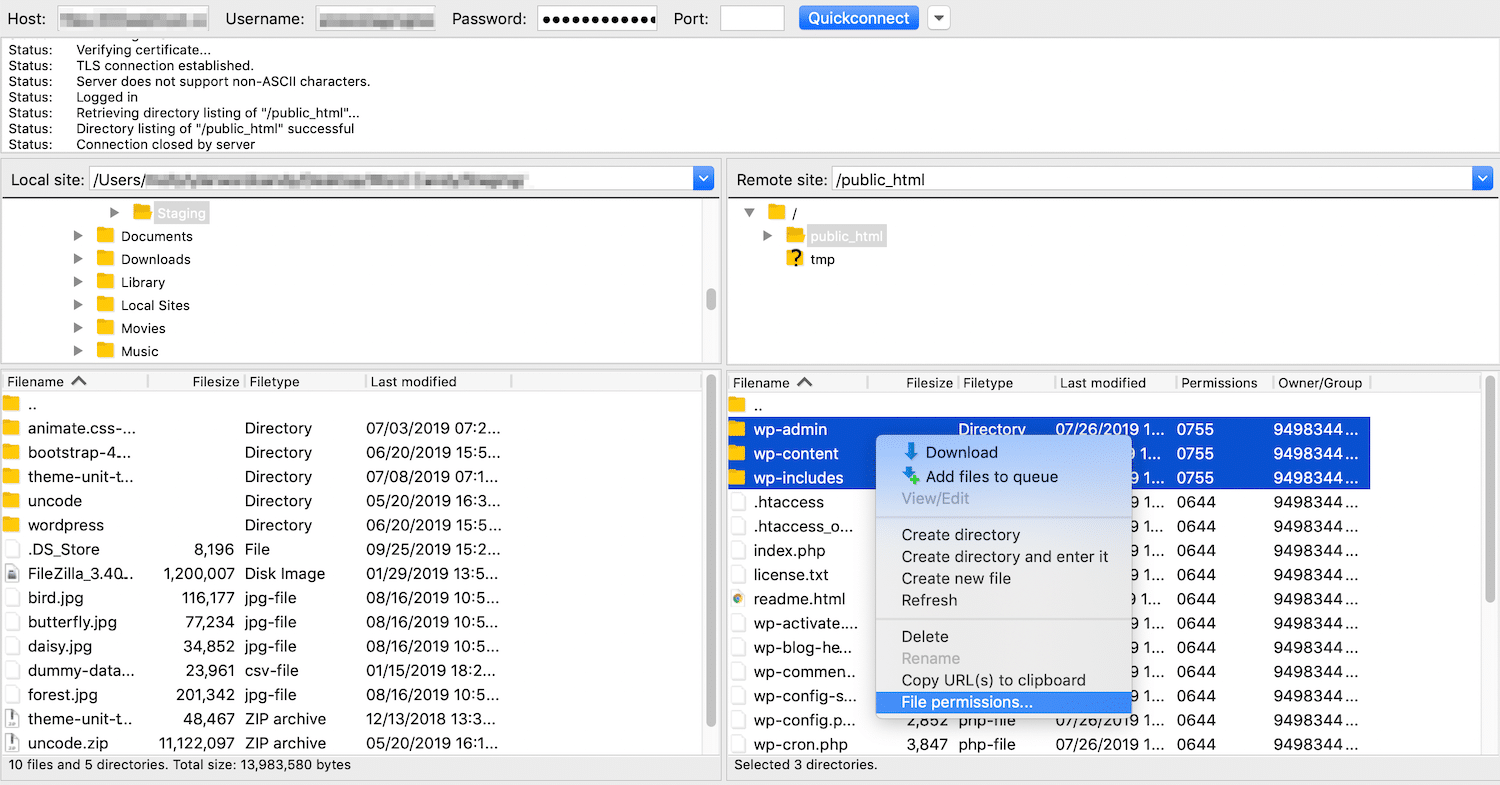
You should see a window that contains a handful of settings:
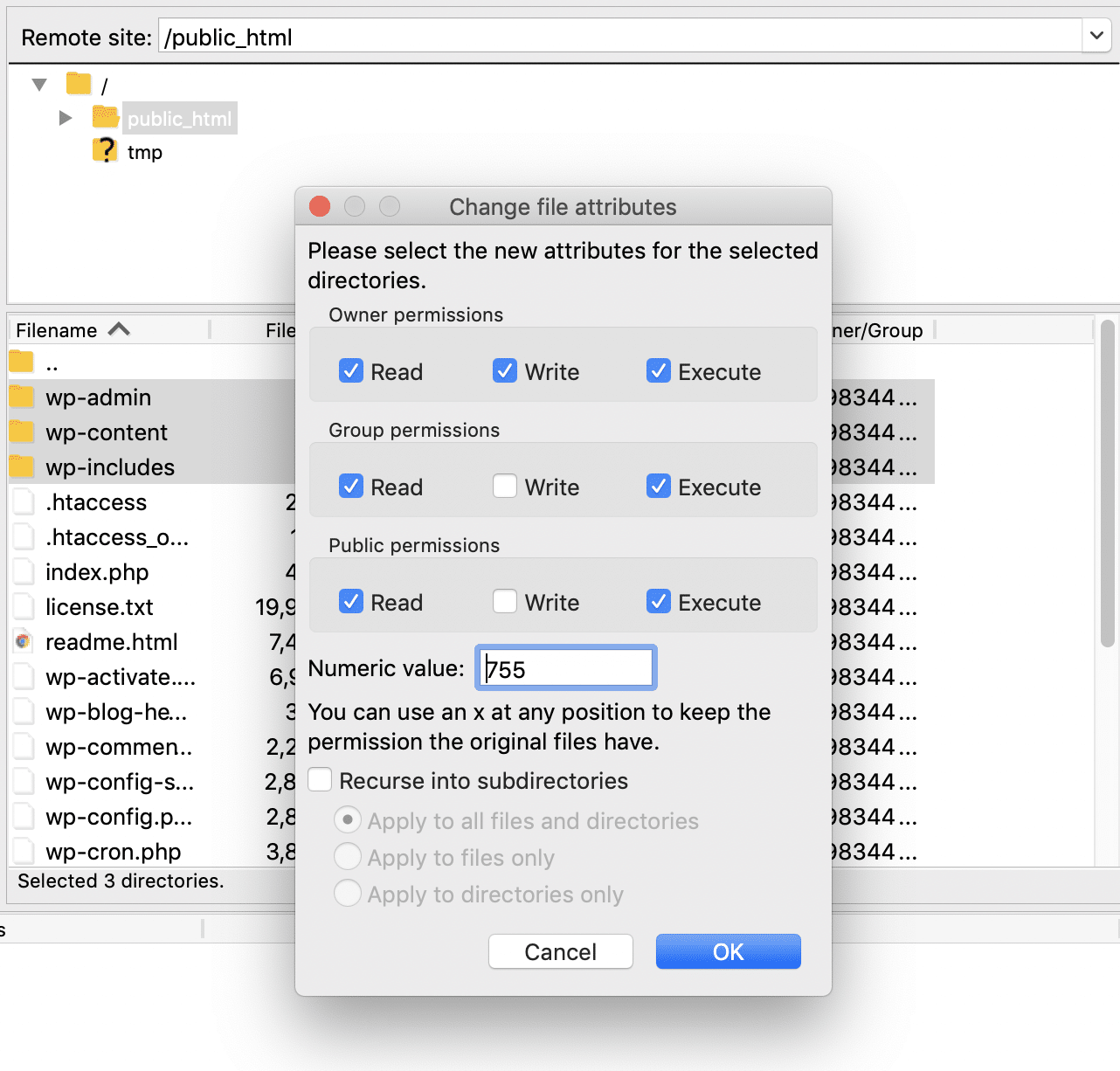
Check that the options here are set to the following values:
- Owner Permissions: Read, Write, Execute.
- Group Permissions: Read, Execute.
- Public Permissions: Read, Execute.
- Numeric value: 755.
- Recurse into subdirectories.
- Use to directories only.
Click on the OK button to close the window. Now return to your site and attempt to install or update the plugin/theme again.
Information technology'south worth noting that some hosting providers, including those that use cPanel, have their ain tools you lot can apply without bothering with FTP/SFTP. You can ofttimes find this tool past logging in to your hosting account, navigating to the site experiencing the mistake, and looking for a File Manager.
Summary
Your WordPress site'south plugins and themes provide of import functionality for you and your users. Encountering an error when installing or updating 1 can throw a wrench in your plans and slow down your progress.
To make up one's mind if a file permissions issue is causing a plugin or theme installation error on your site, you lot can apply the Site Health tool or bank check out your server'south error log. Afterward that, resetting your permissions using FTP/SFTP should but take a few minutes.
Save fourth dimension, costs and maximize site performance with:
- Instant help from WordPress hosting experts, 24/7.
- Cloudflare Enterprise integration.
- Global audience reach with 29 data centers worldwide.
- Optimization with our built-in Application Performance Monitoring.
All of that and much more, in one plan with no long-term contracts, assisted migrations, and a 30-twenty-four hours-money-dorsum-guarantee. Check out our plans or talk to sales to notice the programme that's correct for you.
Source: https://kinsta.com/knowledgebase/installation-failed-could-not-create-directory/
0 Response to "Unable to Upload Wordpress Website to Siteground File Manager"
Publicar un comentario